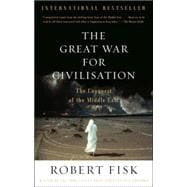
Note: Supplemental materials are not guaranteed with Rental or Used book purchases.
Purchase Benefits
What is included with this book?
| Acknowledgements | |
| List of Maps | |
| Preface | |
| "One of Our Brothers Had a Dream . . ." | |
| "They Shoot Russians" | |
| The Choirs of Kandahar | |
| The Carpet-Weavers | |
| The Path to War | |
| "The Whirlwind War" | |
| "War against War" and the Fast Train to Paradise | |
| Drinking the Poisoned Chalice | |
| "Sentenced to Suffer Death" | |
| The First Holocaust | |
| Fifty Thousand Miles from Palestine | |
| The Last Colonial War | |
| The Girl and the Child and Love | |
| "Anything to Wipe Out a Devil . . ." | |
| Planet Damnation | |
| Betrayal | |
| The Land of Graves | |
| The Plague | |
| Now Thrive the Armourers. . . | |
| Even to Kings, He Comes. . . | |
| Why? | |
| The Die Is Cast | |
| Atomic Dog, Annihilator, Arsonist, Anthrax, Anguish and Agamemnon | |
| Into the Wilderness | |
| Notes | |
| Select Bibliography | |
| Chronology | |
| Index | |
| Table of Contents provided by Publisher. All Rights Reserved. |
The New copy of this book will include any supplemental materials advertised. Please check the title of the book to determine if it should include any access cards, study guides, lab manuals, CDs, etc.
The Used, Rental and eBook copies of this book are not guaranteed to include any supplemental materials. Typically, only the book itself is included. This is true even if the title states it includes any access cards, study guides, lab manuals, CDs, etc.
Excerpted from The Great War for Civilisation: The Conquest of the Middle East by Robert Fisk
All rights reserved by the original copyright owners. Excerpts are provided for display purposes only and may not be reproduced, reprinted or distributed without the written permission of the publisher.